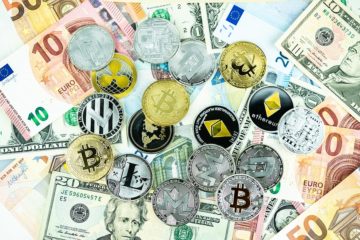Dollar Drops Most in Five Weeks on ‘Shockingly Weak’ Services

published Sep 6th 2016, 1:03 pm, by Lananh Nguyen
(Bloomberg) —
A gauge of the dollar dropped by the most in five weeks after a report showed America’s service industries expanded in August at the weakest pace in six years, damping the outlook for higher U.S. interest rates.
The U.S. currency fell against most of its major counterparts, including high-yielding peers such as the Australian dollar and South African rand. The Institute for Supply Management’s non-manufacturing index slumped to 51.4, the lowest since February 2010, from 55.5 in July, a report from the Tempe, Arizona-based group showed Tuesday. That follows a factory survey from the group earlier this month, which showed manufacturing unexpectedly contracted.
“The last two ISM reports have been shockingly weak, and I think the case for the Fed to hike this month becomes increasingly more difficult and unlikely,” said Mazen Issa, a senior foreign-exchange strategist at Toronto-Dominion Bank in New York. That’s being reflected in a falling U.S. dollar, he said.
Signs of slowing growth in the world’s biggest economy may exacerbate the greenback’s 5.1 percent slump this year by dimming expectations that U.S. monetary policy will further diverge from that of the Bank of Japan and the European Central Bank, which are adding stimulus to spur growth and inflation. In a world where an increasing number of government bonds yield less than zero, relatively high-yielding currencies such as the Aussie and rand have become attractive alternatives.
The Bloomberg Dollar Spot Index, which measures the currency against a basket of 10 peers, fell 1.1 percent as of 2:02 p.m. in New York, the biggest drop since July 29. The greenback slid 1 percent to $1.1260 per euro and lost 1.3 percent to 102.04 yen.
The Aussie gained for a fifth day, its longest winning streak since March, after the nation’s central bank kept interest rates steady. It’s added more than 2 percent versus the greenback since Aug. 31. South Africa’s rand led gains among major currencies, pushing its advance this month to almost 5 percent, as data showed the economy avoided its second recession in seven years.
The odds of a hike at the U.S. central bank’s Sept. 20-21 meeting fell to 24 percent in futures markets, from 34 percent a week earlier, while the chance of a December increase dropped to 51 percent, from 59 percent.
“The longer-term outlook for Fed policy is still very benign and that’s helping risk-sensitive currencies,” said Vassili Serebriakov, a foreign-exchange strategist at Credit Agricole CIB in New York. “The market likes to buy into high-yielders” when the dollar retreats, he said.
To contact the reporter on this story: Lananh Nguyen in New York at lnguyen35@bloomberg.net To contact the editors responsible for this story: Boris Korby at bkorby1@bloomberg.net Paul Cox, Mark Tannenbaum
copyright
© 2016 Bloomberg L.P







No Comment